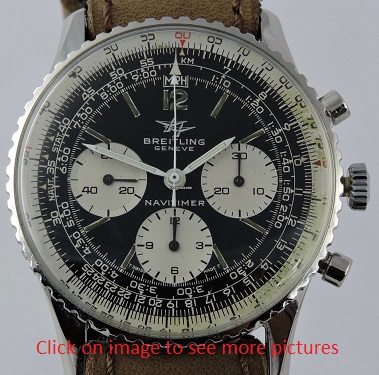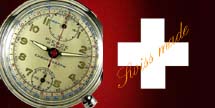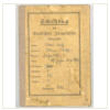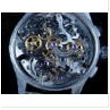 Breitling was founded by Louis Breitling in 1884 in St Imier with the specific purpose to develop chronographs and counters for scientific and industrial applications. The late 19th century witnessed a number of unique industrial developments such as the automobile and the aeroplane. Breitling recognised that these new machines would need timing instruments and soon became a manufacturer of high quality timing instruments. Rapid expansion led to a move to the Swiss town of La-Chaux-de-Fonds in 1892 to accommodate growth. Breitling was founded by Louis Breitling in 1884 in St Imier with the specific purpose to develop chronographs and counters for scientific and industrial applications. The late 19th century witnessed a number of unique industrial developments such as the automobile and the aeroplane. Breitling recognised that these new machines would need timing instruments and soon became a manufacturer of high quality timing instruments. Rapid expansion led to a move to the Swiss town of La-Chaux-de-Fonds in 1892 to accommodate growth.
In 1936 Breitling was chosen among others like Omega and Vertex to supply the Royal Air Force with time keeping equipment. In the late 40’s Breitling became the US Air Force official pilots watch whilst also supplying the American armed forces. By the 50’s Breitling had cemented their position in the aviation industry and was supplying cockpit clocks for most of the international airlines.
Manual of the Breitling Navitimer 806 can be found here.
Over the years, Breitling launched a number of classic watches. 1942 saw the launch of the Chronomat, the first chronograph to be fitted with a circular slide rule. Following the great success of the Chronomat, Breitling made a second slide rule chronograph and released it some time between 1952 (claimed by Breitling) and 1954 (believed by eminent Breitling experts). This watch has the logo of the AOPA - the Aircraft Owners and Pilots Association - on the dial, and current thinking is that all the first examples of the watch had this logo. The Navitimer was a wrist watch equipped with a so called “navigation computer” that allowed pilots to calculate flight plans. This watch became an instant favourite amongst pilots.
The Valjoux 72 version is thought to be the first Navitimer by experts who believe the apparent 1953 Navitimers actually date from circa 1960.Some Navitimers with the Valjoux 72 movement did not have the AOPA wings logo but had a gilded traditional "B" Breitling logo. These watches are extremely rare.
In 1961 a 24-hour version of the Navitimer 806 was released. Shortly after this (most likely during 1962) the 24-hour version was given a new model reference "809" and was named the "Navitimer Cosmonaute". Confusingly many ref 809's had the word "NAVITIMER" on the dial but not "COSMONAUTE" but it is the generally accepted convention amongst watch collectors that all ref 809's are Cosmonautes and all ref 806's are Navitimers. Navitimers with all black dials continued to be made until the early 1960's. There were several variations in dials and bezels up until they were completely superseded by the silvered subdials variations. As with the previous all-black dial Navitimers, there were several variations in the silvered subdial Navitimers. The most noticeable was the increase in size of the subdials. The exact date when this was first done is not known but is thought to have been in the mid-1960's. The earliest example seen by the author dates from 1964 but as always, without definitive documentation one cannot be absolutely sure that the dial was not changed from the smaller subdials version at a later date. After about 1970, there are less and less Navitimers with the smaller subdials and ca. 1970 is generally thought of as the time when the smaller size began to be rapidly phased out.
An elaborate historical review of the Navitimer Ref.806 can be found here
Most Navitimer ref.806 watches are fitted with the Venus 178 movement as is this watch. The Venus 178 movement is a 17 jewel manual-wind chronograph with 60s, 15/30min, 12h, pillar wheel. Its beat rate is 18000 A/h and has a power reserve of 45h when fully wound.
|




